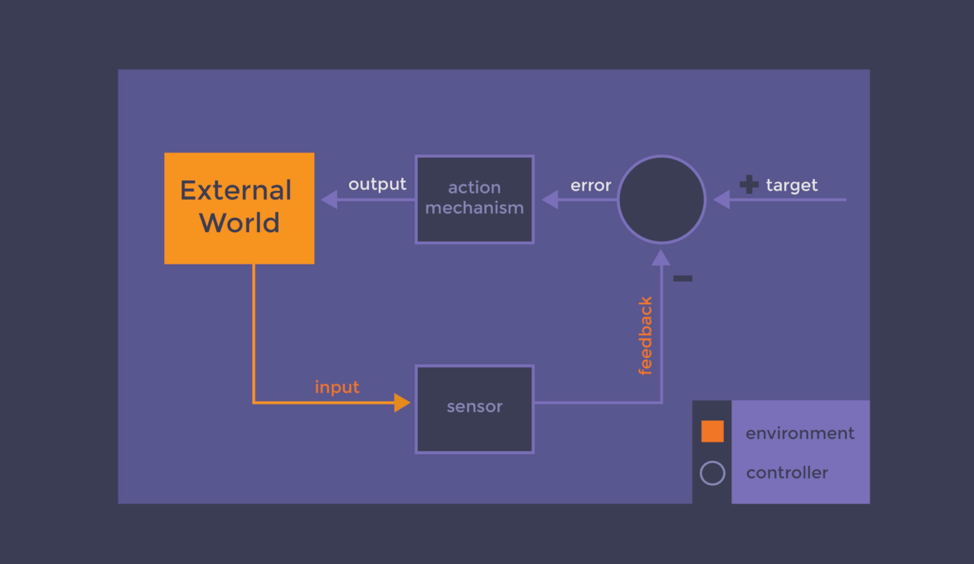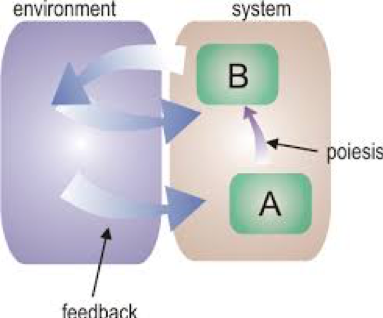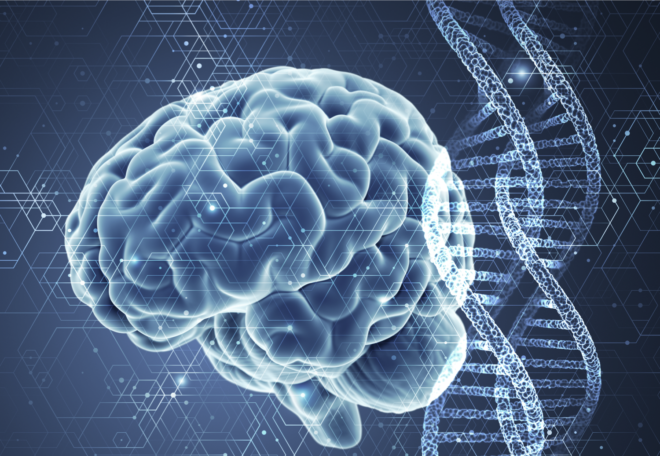Here I discuss the concept of an adaptive traverses and how this might explain the link between genes and behavior.
Your DNA knows things. It knows how to build brains. It also knows that you should be afraid of loud noise, much like it knows that the retina should connect to the posterior part of your brain known as the visual cortex. Human DNA also knows that a baby should be paying attention to a person speaking so that it can learn to speak that language too.
But how does this knowledge storage and its expression work? How can knowledge stored in a sequence of nucleotides within DNA be transferred into anatomy of the brain or into behavior? Who is reading the blueprints and performing the construction of the mind? Of course, we are not asking here about the gene expression pathways of transcription, amino acids, proteins folding etc. This is all well known. We are asking about the general principles by which abstract knowledge stored in some general form like genes can be expressed in a more concrete form like human behavior.
To explain this I want to introduce the concept of an adaptive traverse.
Understanding an Adaptive traverse
To understand adaptive traverses, let us consider a simple example of an adaptive system: A thermostat hooked up to a heater. The job of the system, the thermostat + heater, is to keep a room warm, not too hot but also not cold.
This heating system has two types of knowledge. One type is permanent and general. The other type is instantaneous and concrete. The permanent knowledge includes rules about when to start and stop heating. For example, if the room temperature is above 26° Celsius (79° Fahrenheit), stop heating; and if the temperature is below 25° Celsius (77° Fahrenheit), start heating. The instantaneous piece of knowledge is the state of the room temperature currently and the actual presence of heating activity. For example, right now the room is at 26.3° Celsius and heating is switched off. From the general rule a concrete piece of information has been inferred. Both pieces of information are represented in the physical state of the thermostat. The general information is represented by the construction of the machine: physical properties of thermostat’s bimetal sensor (we assume an old-fashioned thermostat here), the fact that the bimetal is placed within the room that needs be heated, the physical connection between the source of energy and the heater, the ability of the thermostat to stop and let through this flow of energy in dependence of what the sensor reads, and so on. The general knowledge is an integral part of the engineering of the machine. Once built right, the machine “knows” the rules of heating spaces in which humans live.
Concrete information within the system is about the room temperature right now and about whether the room is being heated or not. Concrete information is also represented in physical properties of the system. The position of the bimetal sensor tells us whether heating should take place or not. The amount of energy flowing tells us whether heating is taking place or not. The current physical temperature of the heating body tells us that heat is currently being radiated into the room. For as long as the device is in function, a traverse of knowledge continually occurs from general to concrete, and both pieces of knowledge are being concurrently present at any point in time.
For a traverse of knowledge to occur correctly and thus functionality to be achieved, one precondition must be fulfilled: A feedback loop must be closed between the inputs into the heater and the outputs from the heater. The temperature sensor is the input. The heat emitted into the room is output. This emitted heat must affect the sensor. The place at which the system operates must respond to the actions of the heater. That is, the heat emitted must affect the temperature read. If this does not happen—for example if the heater is not placed in a room but instead at an open space such as a meadow—the functionality of the heater will be compromised. The adaptive traverse will not satisfy its function.
 Figure 1: Adaptive traverse requires interaction with the external world and acts similarly to a controller. The physical build of the machinery contains general knowledge about the rules of control. The state of the machinery contains immediate knowledge on what is happening right now.
Figure 1: Adaptive traverse requires interaction with the external world and acts similarly to a controller. The physical build of the machinery contains general knowledge about the rules of control. The state of the machinery contains immediate knowledge on what is happening right now.
Not surprisingly, there are many adaptive traverses within living systems. The gene expression system detects lack of proteins and synthesizes the needed ones. The pancreas controls the amount of glucose in the blood. Vasodilation controls blood pressure and body temperature. The patellar reflex controls the posture of our body. The immune system detects the presence of pathogens and acts accordingly. A wolf laps up water from a pond to resupply water for its body. And so on.
All those mechanisms have a certain form of general knowledge. Much like the thermostat, in their structure they possess rules on when and how to act. And they have concrete knowledge too; at any moment in time they seem to know what is going on and produce actions accordingly. In other words, they all traverse knowledge from general to specific—much like the thermostat does.
Organizing adaptive traverses
How does this palette of traverses get tuned up to work precisely and successfully? How does a living system ensure full functionality of all the traverses are achieved and that traverses are executed exactly when they are needed so that the organism survives?
Obviously, not all traverses are created equal. DNA expression seems somehow to have more powers than vasodilation or the pancreas. To make vasodilation possible, DNA must be expressed first. Similarly, to implement a functional patellar reflex, knowledge from our genes needs to be consulted. Traverses create other traverses.
 Figure 2: A traverse creates another traverse: System A creates system B. The specific immediate knowledge of one traverse (that executed by A) becomes the general rule of another traverse (used by B). Traverses always must interact with the environment in order to fulfill their function.
Figure 2: A traverse creates another traverse: System A creates system B. The specific immediate knowledge of one traverse (that executed by A) becomes the general rule of another traverse (used by B). Traverses always must interact with the environment in order to fulfill their function.
This relation is not symmetric. The effect DNA expression has on glucose regulation mechanisms is not the same as the effects these sugar regulation mechanisms have on the machinery for DNA expression. This asymmetry leads to a hierarchy. We call it a poietic hierarchy: poiesis (from Ancient Greek: ποίησις) means to bring something into being which did not exist before. DNA traverses bring into being other adaptive mechanisms that can execute traverses themselves.
This idea of adaptive traverses organized into a poietic hierarchy has powerful implications and explanatory power. In neuroscience, a belief has been firmly rooted that it is the neural network that performs mental computations. Everybody works under the connectionist assumption: the idea that it is the network and its connectivity that matter. But imagine for instance an alternative. What if DNA does not directly determine the properties of our neural networks but instead, if there is one traverse mechanism in-between, one that is implemented by expression of genes and that is more directly responsible for the poiesis of the neural network? One traverse creates another one, which in turn creates the third one. If we were to examine the system through the lens of a poietic hierarchy of adaptive traverses, there is a different view that emerges that can resolve many of the conundrums of connectionist theory with respect to phenomenology such as working memory, spontaneous activity and flexible information routing in the brain. In the next post I will discuss this in depth in a theory I call the Theory of Hierarchical Adaptation or Practopoiesis.
This is part of a Mind/Brain series by Danko Nikolić. See the whole series here.


Where can I find your Theory of Hierarchical Adaptation or Practopoiesis? (cannot see it in your series).
Will you define ‘adaptation’, which seem to be a currently universally accepted concept? The difference with fluid adjustment (without patterning rules) is never explicitly defined, and this adjustment seems to be considered among the approximation loss of lesser importance – why? [Context: this is of major significance for cognition in some autistic people, and for the collective behavior of societies.]
Will you explain how the survival of the complex /intelligent system can occur without regard for the viability of its lower-order systems (e.g. brain central control of the body’s survival, when basic osmosis does not function properly or spontaneously) . What does this do to the higher-order system? And why the survival seems, by all accounts, to matter more than local/systemic viability of cells for example?